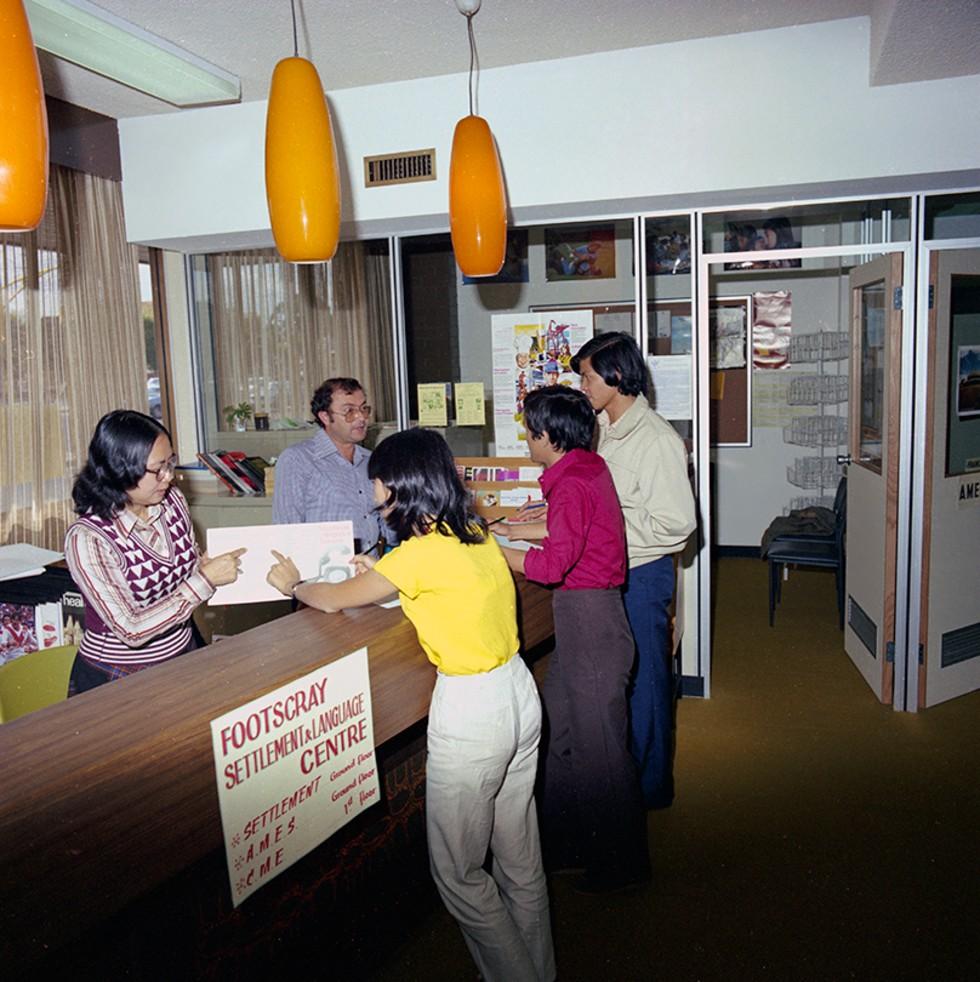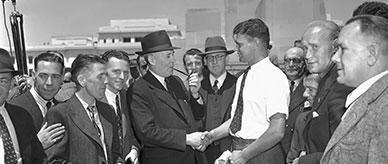


About this record
This photograph shows migrants being assisted at the Footscray Settlement and Language Centre.
Educational value
- The Footscray Settlement and Language Centre was located in Footscray, five kilometres from the Melbourne CBD. It provided a range of services to newly arrived migrants. Today, Footscray has a population of 13,000 people, approximately 60 per cent of whom were born in another country.
- In 1977 the Coalition government, under Prime Minister Malcolm Fraser, recognised that migrants arriving in a new country had special needs and, in order to maintain social cohesion, it was essential that their transition be properly supported. It commissioned a review of post-arrival programs and services available to migrants, to be chaired by Frank Galbally QC. The 1978 ‘Galbally Report’, published in 10 different languages, found that services available to new migrants were inadequate and that stronger service provision was required.
- The Galbally Report recommended the establishment of migrant resource centres, which would provide a range of services: post-arrival accommodation, assistance with accessing doctors, translating and interpreting, English lessons, and assistance in getting qualifications recognised in Australia. Migrant resource centres were operated by representatives of locally based ethnic communities, and supported by volunteers from a range of cultural backgrounds. The centres’ services specifically targeted non-English speaking migrants who would have greater needs adjusting to life in Australia.
- By the late 1970s, the Australian Government no longer expected migrants to assimilate into the British-based culture that once dominated Australia. The term ‘multiculturalism‘ was used to emphasise the value of all cultures to the Australian identity.
- The government established a number of initiatives during this period. In 1977 the Special Broadcasting Service (SBS) television channel was launched to provide programs in a range of languages and to represent a range of cultures. New language-education programs were implemented in schools, so students could learn about the value of cultural diversity.
- Migrant resource centres still operate throughout Australia today. They provide a range of services—including assistance with settlement, welfare, advocacy, and individual support and referral assistance. The aim of the centres is to support migrants and refugees so they are able to participate in the Australian community while maintaining their individual culture and heritage.
Need help with your research?
Learn how to interpret primary sources, use our collection and more.

